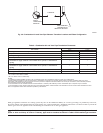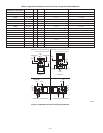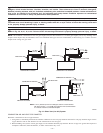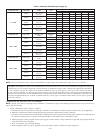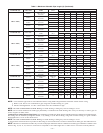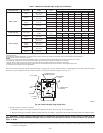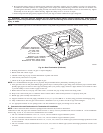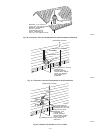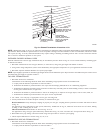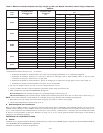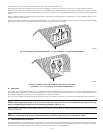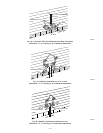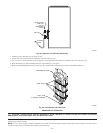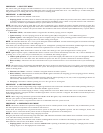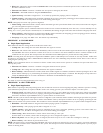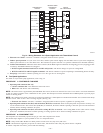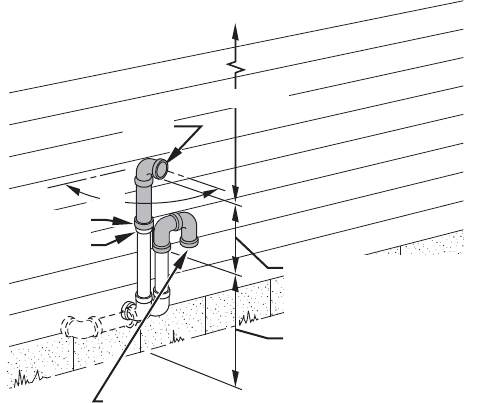
NOTE: Shaded parts in Fig. 39, 40, 41, 42, and 43 are considered to be termination. These components should NOT be counted when determining
pipe diameter. Roof termination is preferred since it is less susceptible to damage, has reduced chances to take in contaminants, and has less visible
vent vapors. (See Fig. 39 or 40.) Sidewall termination may require sealing or shielding of building surfaces with a corrosive resistance material
due to corrosive combustion products of vent system.
EXTENDED EXPOSED SIDEWALL PIPES
Sidewall combustion-air and vent pipe terminations may be extended beyond area shown in Fig. 42 or 43 in outside ambient by insulating pipes
as indicated in Table 8.
1. Determine combustion-air and vent pipe diameters, as stated above, using total pipe length and number of elbows.
2. Using winter design temperature (used in load calculations), find appropriate temperature for your application and furnace model.
3. Determine required insulation thickness for exposed pipe lengths.
NOTE: Pipe length(ft) specified for maximum pipe lengths located in unconditioned spaces. Pipes located in unconditioned space cannot exceed
total allowable pipe length as specified in Table 7.
TWO-PIPE TERMINATION KIT
1. Determine location for termination.
Consideration of the following should be made when determining an appropriate location for termination kit.
a. Comply with all clearance requirements as stated in Table 5.
b. Termination kit should be positioned where vent vapors will not damage plants/shrubs or air conditioning equipment.
c. Termination kit should be positioned so that it will not be affected by wind eddy (such as inside building corners) or allow recirculation
of flue gases, airborne leaves, or light snow.
d. Termination kit should be positioned where it will not be damaged by or subjected to foreign objects, such as stones, balls, etc.
e. Termination kit should be positioned where vent vapors are not objectionable.
2. Cut 2 holes, 1 for each pipe, of appropriate size for pipe size being used.
3. Loosely install elbow in bracket and place assembly on combustion-air pipe.
Roof terminations-Loosely install pipe coupling on properly cut vent pipe. Coupling must be positioned so bracket will mount as shown
in Fig. 39.
For applications using combustion-air pipe option, indicated by dashed lines in Fig. 39, install 90° street elbow into 90° elbow, making
U-fitting. A 180° U-fitting may be used.
Sidewall terminations-Install bracket as shown in Fig. 42 or 43.
For applications using vent pipe option indicated by dashed lines in Fig. 42, rotate vent elbow 90° from position shown in Fig. 42.
4. Disassemble loose pipe fittings. Clean and cement using same procedures as used for system piping.
5. Check required dimensions as shown in Fig. 39, 42, or 43.
CONCENTRIC VENT/AIR TERMINATION KIT
1. Determine location for termination.
Consideration of the following should be made when determining an appropriate location for termination kit.
a. Comply with all clearance requirements as stated in Table 5.
Fig. 43—Sidewall Termination of Less than 12 in.
A87226
MAINTAIN 12 IN.
CLEARANCE
ABOVE HIGHEST
ANTICIPATED SNOW
LEVEL OR GRADE,
WHICHEVER IS
GREATER.
90¡
VENT
12 IN. SEPARATION
BETWEEN BOTTOM OF
COMBUSTION AIR AND
BOTTOM OF VENT
BRACKET
COUPLING
12″ MINIMUM
OVERHANG OR ROOF
COMBUSTION-AIR
(ELBOW PARALLEL
TO WALL)
—39—



